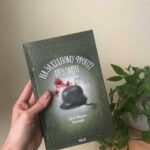
(opinion article)
Today we have reached the stage of overconsumption. Humanity produces 100 billion garments and accessories annually, of which 60% ends up in landfills. We only recycle 1% of textiles. Working on the linear principle of “take a resource ― produce a product ― use it ― throw it away” has placed the fashion and textile industry in the second place in the world in terms of environmental pollution. This is due to the high dependence on natural resources, as well as energy and water-intensive production processes.
That is why, in order to reduce the negative impact of production processes on the environment, it is necessary to introduce the principles of a circular economy and “cyclical fashion.” The closed-loop economy presupposes a careful attitude to natural resources, both to those that are in the bowels of the earth and those already used. A cyclical economy implies the return of a resource ―a product, its components and materials ― into the cycle of production and consumption indefinitely or as long as possible.
The main principles of cyclical fashion are the production of clothing from safe and recyclable materials, the use of renewable resources and the introduction of new business models that allow the product to last longer and turn old clothes into new ones.
What does the implementation of the principles of a cyclical economy look like in the fashion industry?
For example, Stella McCartney switched entirely to recycled cashmere and ditched the new yarn, which is being replaced by ReVerso. This reduces the eco-trail associated with the “extraction” of new raw materials from cashmere goats. Made in Italy using a special technology based on surplus textile production ― leftovers, scraps and unused yarn from factories ― this thread has the same properties as new.
Aquafil manufactures Econyl nylon, made from discarded fishing nets and other nylon waste. Adidas, Speedo, Levi Strauss, Stella McCartney, H&M and dozens of other brands use it to make sports and outdoor clothing, swimwear and underwear.
Another example is the Adidas initiative. The company is testing the Ultraboost DNA Loop, a running shoe that can be recycled at the end of its life and converted into new shoes, with the goal of a wider product launch in 2021.

























































Залишити відповідь